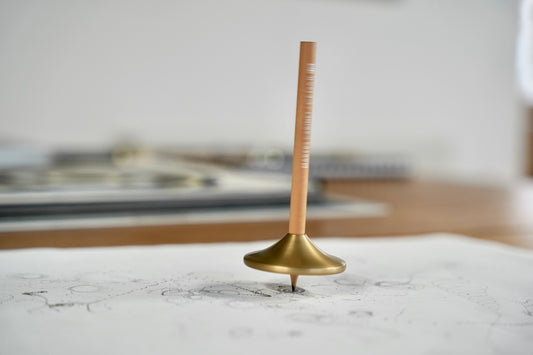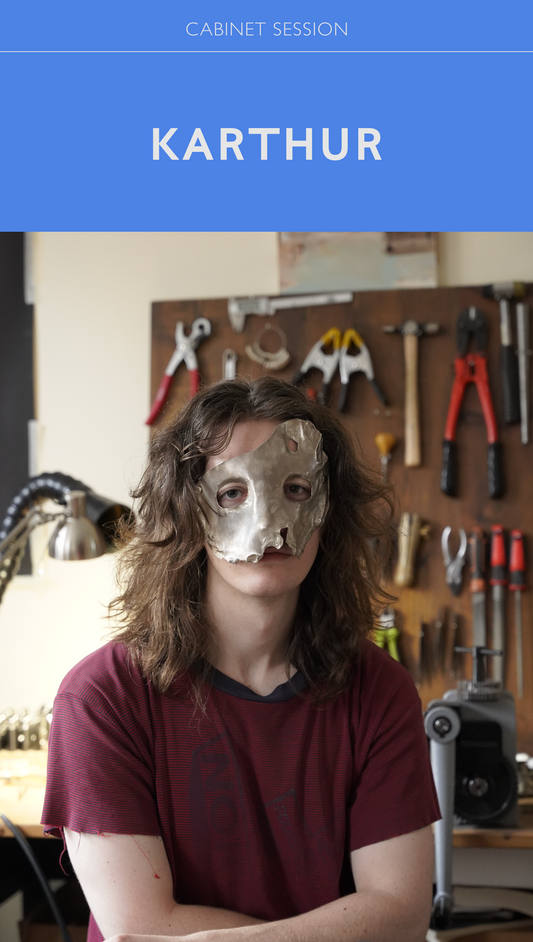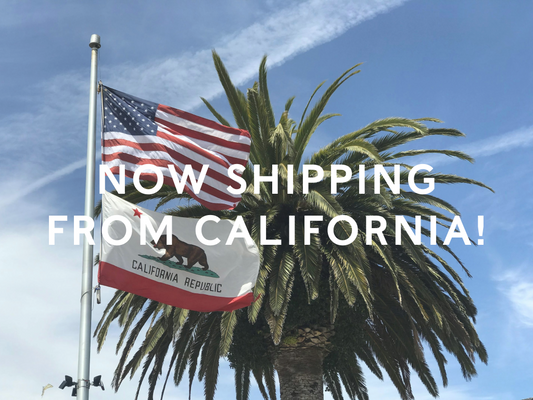
Over a year ago we received an innocuous email from someone at The Royal Mint inviting us to a meeting. As many of you know who have met me, I'm open to chat to anyone and will do my best to make time when possible. Little did I know that this initial conversation would be the start of our greatest collaboration yet.
The initial conversation was about how The Royal Mint are going through a period of modernising and change within their their thousand year old history. They explained how they had developed new technologies like caustics and invested in an precious metal recovery system from e-Waste. I was confused as to where Makers Cabinet could fit in and then we were presented with the opportunity to put a proposal together to make some products as part of the Royal Mint's new venture named 886. We has been hand picked by esteemed jewellery designer Dominic Jones for this task.
After a few months of back and forward we worked with Dom to create some very special edition Makers Cabinet tools. Through this collaboration we were able to achieve a dream of creating our tools entirely in the United Kingdom and have learnt so much along the way.
- Noah Bier, Founder.

You ended Dominic Jones Jewellery in 2014, and brought it back after the pandemic with your Tooth and Nail 2021 collection. What led to this change of heart?
The business was doing well and what you would want your company to be doing. But I was also very aware that I was being pushed into a channel that I didn't really want to, the next step would be an investment, owned by a group. I realised that I'd ended up in a stream that I succeeded in but didn't want the end goal of. I was exploring options, and then galvanised and decided that my 10th collection, I was going to finish.
It was a neat 10 ideas. Long project. Emotionally, it was quite a brave thing to do in the sense that not many people saw it coming other than me. I was still not sure whether it was the right thing to be doing, even as I was doing it, you know, it was emotionally quite a big thing to have to do close down on a rolling company. The decision is one thing, and then to have to see it through is actually quite complicated.
Actually, the energy it took to close it down, meant that I didn't really give it the goodbye that I wanted to. In over those 10 collections, they were celebrated at the time, and I had a lot of success, but I didn't emotionally celebrate that piece of work and it disappeared. Over the years since then with the companies that I've worked for, I feel like my piece of the puzzle and the journey that the jewellery industry has gone on, slightly disappeared. And I just wanted it to exist again.
In the pandemic, I had time. It was something that I thought was quite nice thing to do was to just set it up in an easy to maintain archive project that I can in my own time, re-launch each of the collections again, and add in things that I would have done, if I was doing these collections again today, if I missed that opportunity in that collection. Also, the way that I was designing back then was in this fashion cycle; seasons. I was hand making every sample so there wasn't that much time and you have to cut the collection off at a certain point before or you're not going to complete it in time. So there were lots of things that like, if I'd have had a longer think on the concepts I could have gone further with. So this also gives me the opportunity to kind of revisit and kind of re-explore the ideas of those collections.

You were the one to discover us, but about our collaboration with the Royal Mint. How do we fit into your vision for the future of them and the 886 collection?
Well, when the 886 by the Royal Mint collection was brought to me, although it wasn't called that then.
They said we want you to think about what a jewellery brand could look for us and how should we approach it? What could be a jewellery homeware brand? I went through quite a few different options of possibilities and guided them to the one that I felt was correct. They were very keen on British manufacturing, supporting and growing British talent and how the Royal Mint can interact with other businesses and support other fledgling companies and be the kind of manufacturing hub and an incubator for talent as well.
I wasn’t quite confident with the homeware side and I was very upfront with them about that. In the sense that, jewellery brands that do homeware, for me, often get it wrong. When I think of a jewellery brand going home where you think of it, it's as if everyone's cracked, their posh Christmas cracker; they've lined up a key ring, a little bottle opener and it’s just expensive knickknacks. If we're going to do this from the outset, as something that is part of our business, it has to be done with authority. And we aren't an authority in homeware yet.
I was clear that they should be collaborating with people. I did an initial mood board for ideas of how the collections could play out. A five collection strategy of how the brand could evolve over five seasons worth of collections. I had images of Makers Cabinet’s work before I'd even reached out to you.

The way I structured the very first collection of 886 by The Royal Mint is it’s about what the core of the ornament is, the jewellery side; it's all about the physical, holding the value, gold bullion side. That's what a coin does, it holds value through its material. And then the other part of what a coin does, is it's an illustrative storyteller of history. So you have portraiture and you have Kings, Queens and dates. So, the other part of the collection, which was the homeware, I wanted to focus on stationery, because that's the tools of illustration, the tools of the illustrated part of history. It separated out what a coin is there for into two parts, so that was the reasoning for this first collection and I wanted to do stationery.

You guys have been in my brain ready to be pulled out, and then I had to reach out to you. You have such a recognisable style, and aesthetic, which is quite rare in a lot of cases. It’s relatively rare for something so new to be so identifiable in the way that it's been designed and produced. We had to collaborate and work on the designs and kind of make sure that it will work for both parties and also have the opportunity to be producing these in the UK as well. There isn't much manufacturing in the UK, which is why this is such an exciting project.
The point is to grow the manufacturing of the Royal Mint, whilst the coinage is on a decline because people are using less. They’re building this business, which will grow and support the jobs that will be lost through the decline of coinage. So as we land the coinage business, that will decline over the next 10 years, the jewellery and homeware will hopefully take off. So as this one really starts impacting jobs, this one will be growing jobs so that it doesn't impact and no one loses work. And, in fact, hopefully we can employ new people.
Our version of the Stria is what really stands out. I think that was really an interesting one that we tackled. We wanted to make sure that we could reduce weights where possible because you're currently making them in brass, and we're going to be making them in bronze, silver and precious metals. So we wanted to reduce the metal weight without affecting the design integrity, or making it feel cheap. Figuring out how to redesign the Stria was actually quite complicated because the mechanism that holds it already has a certain depth, all the way to the end. Working out how to redevelop that and not have it look like we've just made it skinnier. Doing it design integrity was actually quite a complicated thing to do and the solution that we found, I really love.
We didn't kind of hide the fact the mechanisms were there, they were celebrated. We use the shape and form from the cufflinks that I designed in the jewellery part of the 886 collection. We've redesigned it in a way that is unique, much more unique for us, but I think looks really strong.
What makes great design and fine craftsmanship to you?
Great design for me is something that doesn't have to hide behind detail. A confidence and a solidity to it, it can have detail and it can have complications. But also it's, it's something that is intrinsically kind of pleasing. No, it's something that you look at, and you're like, oh, I like that. Like, I like that without even needing to know what it is, you know?
It's about a kind of refinement to a point. That is its optimum shape, and feel, a lot of the collection in the jewellery that I've done. It's intentionally really simple and you can overlook it quite easily. It's because it's been designed for the wearer and not for the viewer. I went through 40 variations playing with the angles and curves a bit. It's actually an incredibly complicated piece of design, the forms and shapes and undercuts in but they look really simple, effortless and understated. I think if you can almost take it for granted that's kind of a good piece of design.

You’ve worked with so many huge brands like Fabergé, Thierry Mugler, Astley Clarke, Links of London and now the Mint. How does it compare to working with a small business like ours?
I've come from this, a small business. I started from my kitchen table, when I was 21. So I built that business from a start up mentality like this, it feels very comfortable.
I think that there's real value and being one of the reasons that I got hired is because I'm quite entrepreneurial. When you can grow a business from scratch, you have to be strategic in the way you're thinking, you have to be dynamic, and you have to be able to react and kind of weather the storms. And that thinking is invaluable, you know, so many people who grow through big companies will never understand what that's like, we'll never be able to hustle in the way that that like a company that started like this, it means that I'm less wasteful, it means that I'm more like, dynamic in my thinking, you know, which is a really valuable asset to big companies.

What would you say to a younger designer starting out?
Be a part of your culture. Make sure you are going to club nights, going to events, if your friend has a friend that you think is cool, meet that friend, involve yourself, you know nothing happens in isolation. If you're not interacting with the culture that you're within, you're never going to succeed.
It's really important that you think about who is going to be wearing your jewellery.
Who is going to champion your jewellery? Who's going to shoot your jewellery? Who's going to style your jewellery?
Hopefully you’re ending up in magazines, so who shoots in those magazines, who in your generation is the young people that are assisting stylists? When you meet someone in the pub that is within your field, get a number, offer to do stuff with them. You know, build your network, because that is the most important thing. You've got to do that. Otherwise, you're just hoping.
Talent and good product, is all well and good but if you're not equally, interacting with, with the rest of your environment, you're going to stay in isolation, you’ve got to meet it halfway. I made friends with everyone in my generation. I was lucky that there were so many fun things going on in London when I was younger. I met all the kids that went on and that are now Vogue Editors. Rolling around the floors of nightclubs that have gone on and won Grammys and become the biggest artists in the world, you know? And because I made those friends in those spaces, like, we came up together. Start from the bottom with everyone. You don't know who's going to be the next Harry Styles in your generation. Yeah, completely and do people favours, you ask for favours.
From fashion to currency, how will we ensure the Mint continues to thrive and exist for another 1000 years?I think my responsibility is to support the integration and growth of skills in the manufacturing so that we can grow that part so that it can support not only our business but other businesses, and grow and manage our manufacturing hub for the UK, that is, to offer the same standards as those abroad.
Tell us about the Mint’s e-waste reclamation programme and why is it to this project?
It's a really interesting project that the Mint has funded and supported. It's a completely new form of chemistry, that means the gold can be reclaimed through cold chemistry, so that the circuit boards don't have to be burned. A huge portion of gold is being held by people in old phones and computers, that are shipped abroad, burnt and buried. Whilst there are some forms of mining that are less bad than others but if you don't have to be disturbing the earth, I think that that's really important.
It’s something that we're going to be hopefully bringing in if we're also going to be using silver that is coming from, like, historic, and like old x-rays from the NHS.
What is the future of the 886 collection and where do you want it to go?
Over the next few collections, I’ll be developing its aesthetic and its design language and hopefully it will grow into being one of the big jewellery brands and I see it becoming an English Cartier.




